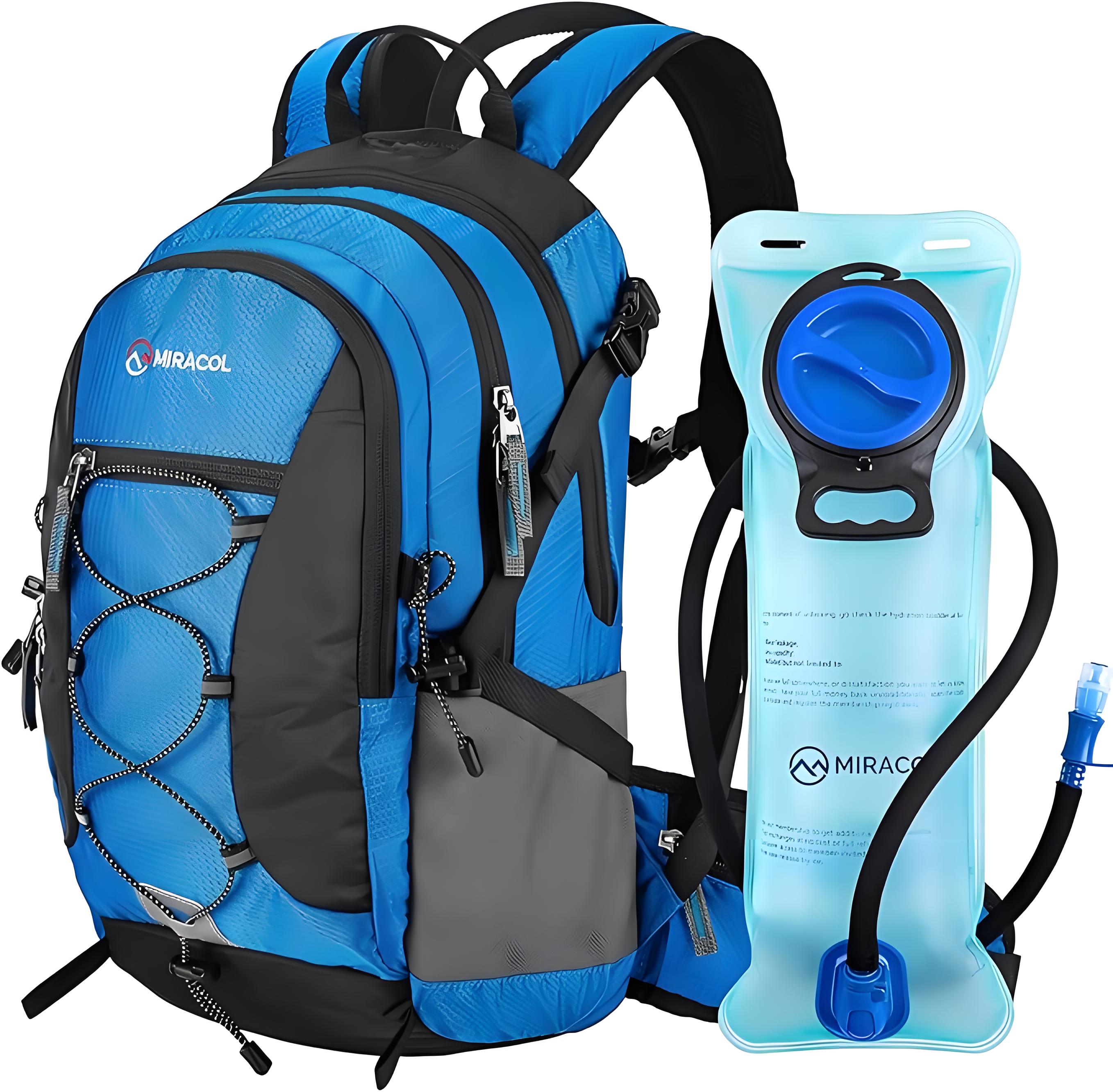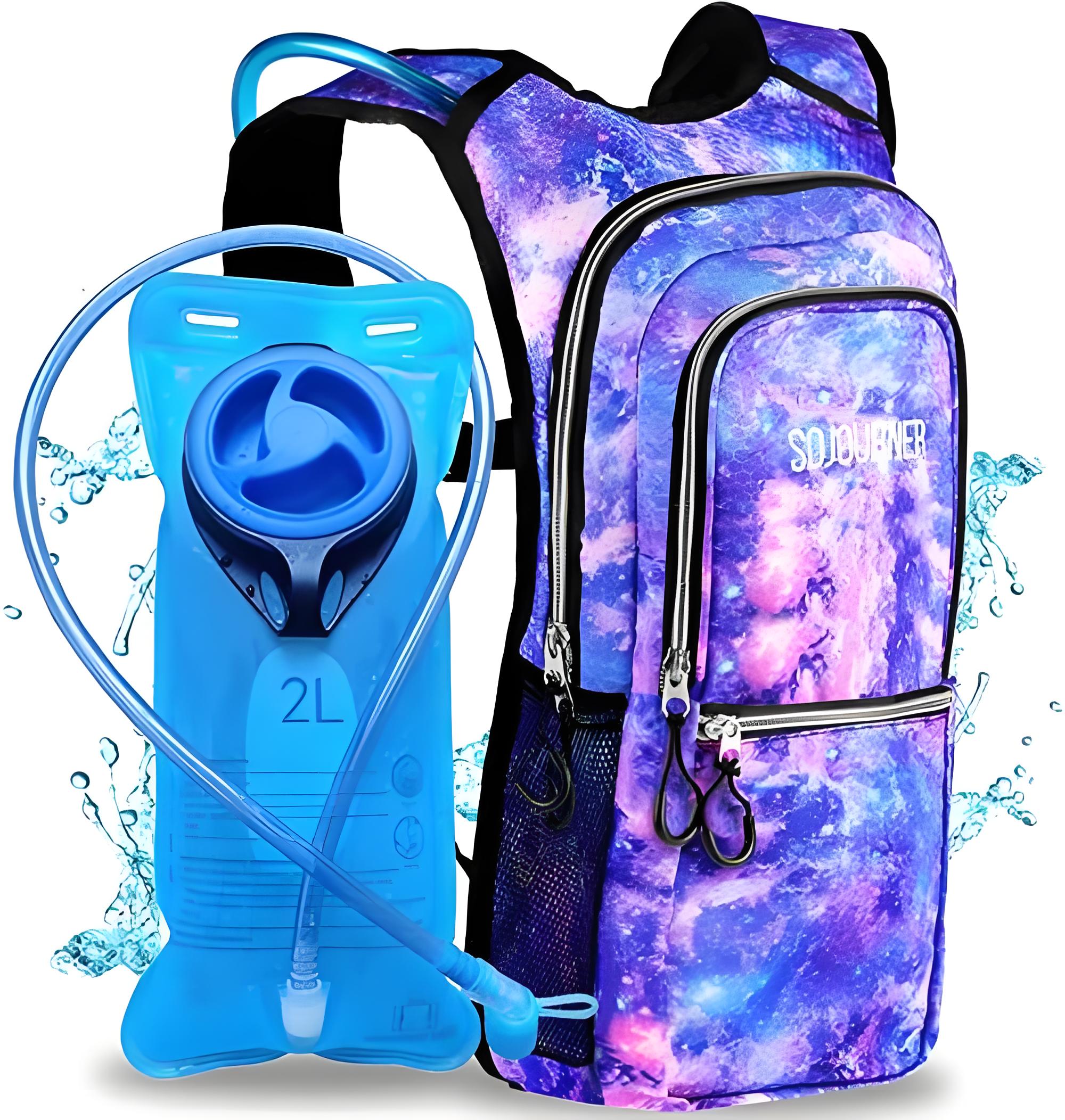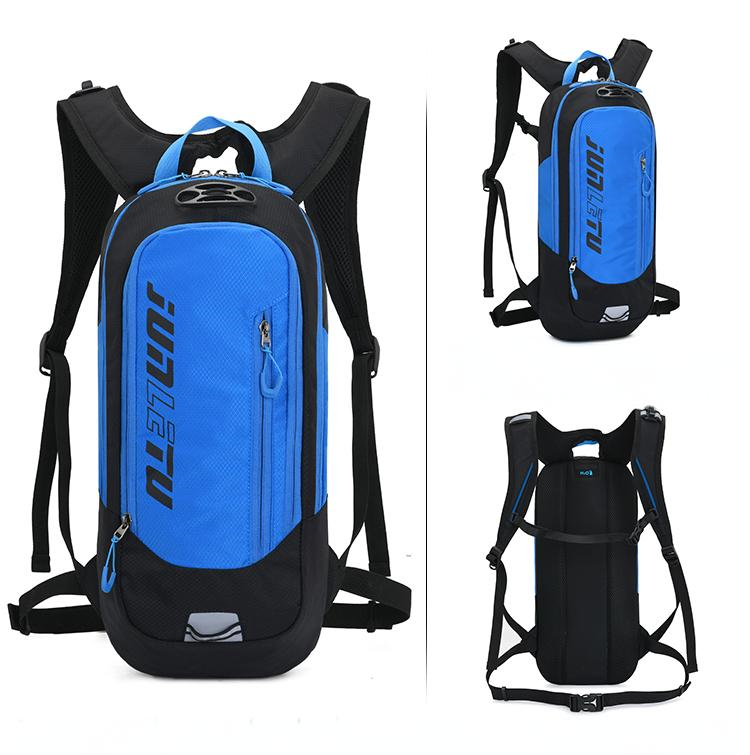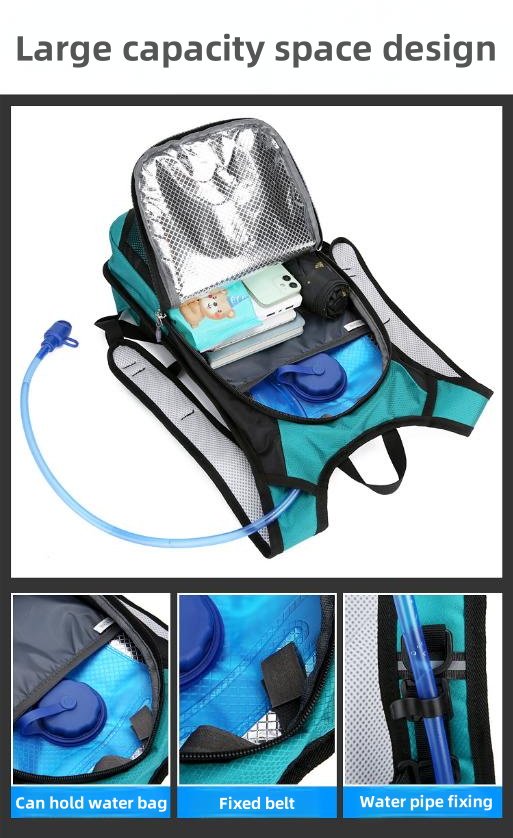As an avid outdoor enthusiast who loves both cycling and hiking, I’m often asked by friends: “Is a hydration backpack really suitable for hiking?” This question seems simple but involves various factors like gear selection, comfort, and functionality. Today, drawing from my personal experience and deep knowledge of outdoor equipment, I’ll explore how hydration backpacks perform in hiking scenarios to help you decide if they’re right for your outdoor adventures.
Why Consider a Hydration Backpack?
Hydration backpacks were originally designed for cycling, prized for their lightweight design and convenient hydration system. However, as outdoor activities have grown in popularity, more hikers have started using these backpacks. The reason is straightforward: during a hike, stopping frequently to grab a water bottle can be cumbersome and disrupt your rhythm, whereas a hydration backpack’s straw system allows for quick and easy hydration.
That said, hiking and cycling are distinct activities with different demands. Cycling typically involves shorter durations and lighter loads, while hiking often entails longer treks, complex terrain, and heavier gear. So, how do hydration backpacks hold up in hiking? Let’s break it down by examining their functionality, comfort, and suitability for various scenarios.

Key Advantages of Hydration Backpacks
Hydration backpacks have several standout features that make them excellent for certain hiking scenarios:
Convenient Hydration
The biggest draw of a hydration backpack is its built-in water reservoir and straw system, allowing you to drink without stopping or removing your pack. This is particularly useful during long hikes or in hot weather, reducing the risk of dehydration. According to data from the National Outdoor Leadership School (NOLS), staying well-hydrated during hiking significantly boosts physical performance and safety.
Lightweight Design
Compared to traditional hiking backpacks, hydration backpacks are typically lighter, with capacities ranging from 5 to 15 liters, making them ideal for short or lightweight hikes. For instance, during a 20-kilometer day hike in the mountains, I used a 10-liter hydration backpack loaded with 2 liters of water, some energy bars, and a thin jacket—it felt incredibly light and didn’t weigh me down like a larger pack would.
Body-Hugging Fit
Hydration backpacks are designed to conform closely to the body, minimizing movement during dynamic activities. This is a big plus for hiking on steep slopes or uneven terrain, as it reduces strain and distraction.
Versatility
Many hydration backpacks come with additional storage compartments for essentials like phones, keys, or rain gear. Some high-end models even feature ventilated back panels or adjustable shoulder straps, balancing comfort and functionality.

Limitations of Hydration Backpacks
While hydration backpacks offer clear benefits, they’re not perfect for every hiking scenario. Here are some limitations to consider:
Limited Capacity
Most hydration backpacks have a capacity of 5–15 liters, which is great for day hikes but insufficient for multi-day treks requiring tents, sleeping bags, or extra gear. I once tried using a 12-liter hydration backpack for a two-day hike, only to realize I couldn’t fit essential warm clothing, forcing me to switch to a larger pack.
Limited Load-Bearing Capacity
Designed for lightweight use, hydration backpacks often lack the robust support systems of professional hiking backpacks. Carrying more than 10 kilograms can lead to discomfort, especially over long distances.
Water Reservoir Maintenance
Cleaning and drying the water reservoir can be a hassle. If not maintained properly, it can harbor bacteria, posing health risks. I once neglected to clean my reservoir and noticed an odd taste in the water, which prompted a thorough cleaning with a specialized solution.
Higher Cost
High-quality hydration backpacks can be pricey, with premium models featuring advanced reservoirs or ventilated back systems costing between $60–$120. For occasional hikers, the cost may not justify the benefits compared to a traditional water bottle and lightweight backpack combo.
When Are Hydration Backpacks Suitable for Hiking?
Based on my extensive hiking and cycling experiences, I’ve identified the scenarios where hydration backpacks shine:
Short Hikes (1–2 Days): For suburban day trips or single-day mountain hikes with minimal gear, hydration backpacks offer unmatched convenience and lightweight performance.
Hot or Arid Environments: In summer or desert hikes, frequent hydration is critical, and the straw system ensures you stay hydrated without pausing.
Fast-Paced Hikes or Trail Running: If you prefer quick movement or participate in trail running, the snug fit and lightweight design reduce physical strain.
Hands-Free Scenarios: For hikes involving climbing or frequent use of trekking poles, hydration backpacks free up your hands by eliminating the need to grab a water bottle.
Conversely, for multi-day heavy-duty hikes, complex terrains, or routes requiring substantial gear, a professional hiking backpack is a better choice.

How to Choose the Right Hydration Backpack for Hiking?
Selecting a hydration backpack requires balancing your hiking needs. Below is a table summarizing key considerations:
| Feature | Description | Recommended Specs | Notes |
|---|---|---|---|
| Capacity | Determines how much gear you can carry | 5–10 liters for day hikes, 10–15 liters for light overnight trips | Larger capacity adds unnecessary weight |
| Reservoir Size | Affects hydration capacity | 1.5–3 liters for most hiking scenarios | Ensure reservoir is BPA-free and easy to clean |
| Suspension System | Impacts comfort and load distribution | Ventilated back panel, adjustable shoulder straps | Long hikes require waist belt support |
| Material & Durability | Affects longevity and weather resistance | Nylon or polyester with waterproof coating | Check zippers and stitching for durability |
My Experience:
After testing several models, I settled on a 12-liter hydration backpack with a 2-liter reservoir, featuring a ventilated back panel and wide shoulder straps. It’s perfect for my frequent day hikes in the mountains. However, during a rainy hike, I noticed its waterproofing was lacking, so I now always carry a rain cover.
How to Use and Maintain a Hydration Backpack?
Purchasing the right hydration backpack is just the start—proper use and maintenance are key to maximizing its benefits. Here are some tips:
Check the Reservoir Before Use
Test for leaks and ensure the straw is clear by filling it with warm water before heading out.
Distribute Weight Properly
Place heavier items close to your back, in the middle or upper part of the pack, to reduce strain on your shoulders. If the backpack has a waist belt, adjust it for better load distribution.
Clean the Reservoir Regularly
After each use, clean the reservoir with warm water and a specialized cleaning solution, then dry it thoroughly to prevent bacterial growth. I use a long, thin brush to clean the straw, which works wonders.

Adapt to Weather Conditions
In rainy seasons, use a rain cover or store valuables in waterproof bags. In hot weather, add ice cubes to the reservoir for cooler water.
Hydration Backpack vs. Traditional Hiking Backpack
To help you decide, here’s a comparison table highlighting the differences:
| Feature | Hydration Backpack | Traditional Hiking Backpack | Best Use Case |
|---|---|---|---|
| Capacity | 5–15 liters | 20–70 liters | Hydration for short trips, traditional for heavy loads |
| Hydration Method | Reservoir + straw, easy access | Water bottle, requires stopping | Hydration for high-intensity or hot conditions |
| Load Capacity | Suitable for <10 kg | Suitable for 10–30 kg | Traditional for multi-day hikes |
| Comfort | Snug fit for dynamic movement | Robust suspension for long treks | Hydration for fast-paced activities |
My Experience:
During a 30-kilometer trail hike, I used a hydration backpack with a 2-liter reservoir, which allowed me to stay hydrated without stopping in hot weather. However, for a three-day, two-night heavy trek, I switched to a 50-liter traditional backpack to accommodate my tent and food supplies, as the hydration backpack couldn’t handle the load.
Real-Life Case Studies: Hydration Backpacks in Action
To give you a clearer picture, here are two personal experiences using hydration backpacks for hiking:
Case 1: Day Hike in the Mountains
Last fall, I hiked a 15-kilometer trail up a 1,500-meter mountain, expecting a 6-hour journey. I used a 10-liter hydration backpack with 1.5 liters of water, some snacks, and a fleece jacket. The straw system let me hydrate on the go, and the snug fit kept the pack stable on steep slopes. My only gripe was the small side pockets, which made accessing my phone a bit tricky.
Case 2: Desert Trek
Earlier this year, I joined a 25-kilometer desert hike with temperatures hitting 35°C. I chose a hydration backpack with a 3-liter reservoir, pre-filled with ice cubes. The straw system ensured I stayed hydrated without pausing, giving me an edge over teammates who stopped for water bottles. However, the limited capacity meant I needed an extra waist pouch for additional gear.
Common Misconceptions and Solutions
New users often have misconceptions about hydration backpacks. Here are some common issues and how to address them:
Misconception: Hydration Backpacks Work for All Hikes
Solution: Choose based on hike duration and load. Use hydration backpacks for short trips and traditional backpacks for heavy or multi-day hikes.
Misconception: More Water Is Always Better
Solution: Match water volume to hike length. For day hikes, 1.5–2 liters is usually enough; for longer trips, consider a water filter or extra bottles.
Misconception: Reservoirs Don’t Need Maintenance
Solution: Clean the reservoir after every use and inspect the straw and seals regularly to prevent leaks or contamination.

Conclusion: Are Hydration Backpacks Worth It for Hiking?
In summary, hydration backpacks are an excellent choice for specific hiking scenarios, particularly day hikes, hot environments, or fast-paced activities. Their convenient hydration system, lightweight design, and snug fit enhance the outdoor experience significantly. However, for multi-day treks or routes requiring heavy gear, a traditional hiking backpack is more suitable.
As an outdoor enthusiast, I recommend selecting gear based on your hiking habits and needs. If you’re a lightweight hiker who values efficiency, a hydration backpack could become your go-to companion. Regardless of your choice, testing your gear and planning your load carefully will ensure a safer, more enjoyable hike.
Frequently Asked Questions
1. Can a hydration backpack hold hot water?
It’s generally not recommended, as water above 60°C may damage the reservoir or affect its seal. Use an insulated bottle for hot liquids.
2. Are hydration backpacks suitable for winter hiking?
Yes, but the straw may freeze in low temperatures. Use an insulated straw cover or choose a backpack with thermal features.
3. How do I judge the quality of a hydration backpack?
Check for food-grade reservoir materials, a comfortable suspension system, and sturdy zippers and stitching. User reviews can also provide insights.
4. Can I use a hydration backpack for running?
Absolutely, especially lightweight models, which are ideal for trail running due to their snug fit and minimal bounce.
5. What should I do if my hydration backpack leaks during a hike?
Check the reservoir’s seal and straw connections for looseness. Use waterproof tape for a temporary fix and replace damaged parts after the trip.
I hope this article helps you understand how hydration backpacks perform in hiking. If you have more questions about outdoor gear, feel free to share them, and let’s dive into the adventure together!